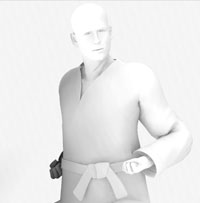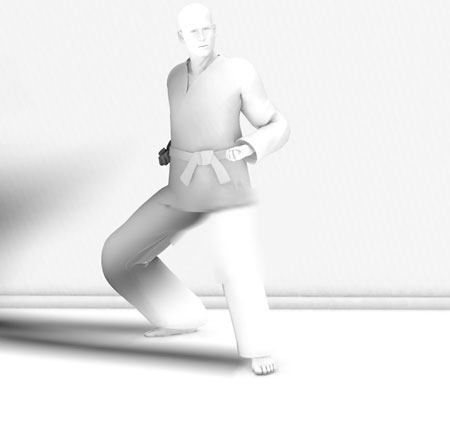Taekwondo 태권도Taekwondo Preschool
Taekwondo is known for its emphasis on high kicking and fast hand techniques, which distinguishes it from other popular martial arts and combat sports such as karate. However, the World Taekwondo (WT) believes that because the leg is the longest and strongest limb a martial artist has, kicks thus have the greatest potential to execute powerful strikes without successful retaliation.
View Taekwondo 태권도 »

Overtraining
Overtraining can be described as a point where a person may have a decrease in performance and plateauing as a result from failure to consistently perform at a certain level or training load exceeds their recovery capacity. They cease making progress, and can even begin to lose strength and fitness. Overtraining is also known as chronic fatigue, burnout and overstress in athletes.
It is suggested that there are different variations of overtraining, firstly monotonous program over training suggest that repetition of the same movement such as certain weight lifting and baseball batting can cause performance plateau due to an adaption of the central nervous system which results from a lack of stimulation. A second example of overtraining is described as chronic overwork type training where the subject may be training with to high intensity or high volume and not allowing sufficient recovery time for the body.
It is important to note the difference between overtraining and over-reaching; over-reaching is when an athlete is undergoing hard training but with adequate recovery, overtraining however, is when an athlete is undergoing hard training without the adequate recovery. Up to 10% of elite endurance athletes and 10% of American college swimmers are effected by overtraining syndrome (unexplained underperformance for approximately 2 weeks even after having adequate resting time).

Addiction
Overtraining can lead to exercise addiction which can lead to negative physiological and psychological effects, an addictive craving for physical activity is shown to lead extreme exercise whilst building up a tolerance to the exercise then needing to go further levels to achieve the same high. Like pharmacological drugs, physical exercise may be chemically addictive. Addiction can be defined as, the frequent engaging in the behaviour to a a greater extent or for a longer time period than intended. It is theorized is that this addiction is due to natural endorphins and dopamine generated and regulated by the exercise. Whether strictly due to this chemical by-product or not, some people can be said to become addicted to or fixated on psychological/physical effects of physical exercise and fitness. This may lead to overexercise, resulting in the "overtraining" syndrome.
Physiology
A number of possible mechanisms for overtraining have been proposed:
- Microtrauma to the muscles are created faster than the body can heal them
- Amino acids are used up faster than they are supplied in the diet. This is sometimes called "protein deficiency"
- The body becomes calorie-deficient and the rate of break down of muscle tissue increases
- Levels of cortisol (the "stress" hormone) are elevated for long periods of time
- The body spends more time in a catabolic state than an anabolic state (perhaps as a result of elevated cortisol levels)
- Excessive strain to the nervous system during training
- Systemic Inflammation which results in the release of cytokines activating an immune response
Other Symptoms
Overtraining may be accompanied by one or more concomitant symptoms:
- Persistent muscle soreness
- Persistent fatigue - this is different from just being tired from a hard training session, this occurs when fatigue continues even after adequate rest
- Elevated resting heart rate - a persistently high heart rate after adequate rest such as in the morning after sleep, this can be an indicator of overtraining
- Reduced heart rate variability
- Increased susceptibility to infections
- Increased incidence of injuries
- Irritability
- Depression
- Mental breakdown
- Burnout
Effects
Laboratory rats and mice have been used as animal models for studies of overtraining. Results in studies with rats show that overtraining can cause negative changes in the immune system which is suggested to arise from the physiological stress on the bodyl. A study conducted at the University of Wisconsin in Milwaukee on overtraining and cycling also showed signs of physiological danger in the participants such as increased resting heart rate, decreased maximum heart rate and a decline in the body's ability to delivery oxygen to its muscles. Listed below are some of the common effects and cited signs of overtraining. Not all of the following effects will occur. The presence of any of these symptoms does not imply that an individual is overtrained.
Physiological
- Lymphocytopenia
- Excessive weight loss
- Excessive loss of body fat
- Increased resting heart rate
- Decreased muscular strength
- Increased submaximal heart rate
- Inability to complete workouts
- Chronic muscle soreness
- Fatigue
- Increased incidence of injury
- Depressed immune system
- Constipation or diarrhea
- Absence of menstruation
- Frequent minor infections/colds
- Insomnia
- Heart Palpitations
- Lower Testosterone Levels
- Higher Cortisol Levels
Psychological
- Depression
- Loss of appetite
- Mood Disturbance
- Irritability
- Loss of motivation
- Loss of enthusiasm
- Loss of competitive drive
- insomnia
- difficulty concentrating
Performance
- Early onset of fatigue
- Decreased aerobic capacity
- Poor physical performance
- Inability to complete workouts
- Delayed recovery
It is also important to remember that the effect of overtraining is not isolated only to effecting the athletes athletic ability but it can have other implications on other areas of life. An example of this is to think about elite athletes who may also be students or in the work force. An overtrained athlete who is suffering fatigue and mood swings or even depression could also have trouble socialising with friends and family, studying for an exam or prepping for work.
Treatment
Allowing more time for the body to recover:
- Taking a break from training to allow time for recovery
- Reducing the volume and/or the intensity of the training
- Suitable periodization of training
- Splitting the training program so that different sets of muscles are worked on different days
- Increase sleep time
- Deep-tissue or sports massage of the affected muscles
- Self-massage or rub down of the affected muscles
- Cryotherapy and thermotherapy
- Temperature contrast therapy (contrast showers etc.). The different hot and cold stimuli can stimulate the immune system, influence release of stress hormones and encourage blood flow which ultimately lessens the bodies pain sensitivity
- Short sprints with long resting time once the athlete is able to continue with light training
Changing diet
- Ensuring that calorie intake at least matches expenditure
- Ensuring total calories are from a suitable macronutrient ratio
- Addressing vitamin deficiencies with nutritional supplements
Preventative Measures
Seeing as there are many non beneficial results of overtraining and the main treatment is taking time out to rest, so to avoid taking time off training prevention is very important for many athletes. The gradual varying of intensity and volume of training is an effective way to prevent overtraining. The athlete should be closely monitored by keeping records of weight, diet and heart rate and the training program should be adjusted in accordance to different physical and emotional stresses.
Planned Overtraining
Overtraining can be used advantageously, as when a bodybuilder is purposely overtrained for a brief period of time to supercompensate during a regeneration phase. These are known as "shock micro-cycles" and were a key training technique used by Soviet athletes.
Useful Articles
- Improving Performance - In addition to instruction and training of psychological skills for performance improvement, applied sport psychology may include work with athletes, coaches, and parents regarding injury, rehabilitation, communication, team building, and career transitions.
- Mental Toughness - Collection of attributes that allow a person to persevere through difficult circumstances (such as difficult training or difficult competitive situations in games) and emerge without losing confidence. The term is commonly used by coaches, sport psychologists, sport commentators, and business leaders.
- Leadership Development - Refers to any activity that enhances the quality of leadership within an individual. Traditionally, leadership development has focused on developing the leadership abilities and attitudes of individuals.
- Practice (Learning Method) - Practice is the act of rehearsing a behavior over and over, or engaging in an activity again and again, for the purpose of improving or mastering it, as in the phrase 'practice makes perfect'.
- Overtraining - Can be described as a point where a person may have a decrease in performance and plateauing as a result from failure to consistently perform at a certain level or training load exceeds their recovery capacity. Overtraining is also known as chronic fatigue, burnout and overstress in athletes.
- Acquisition of Skill - The acquisition of skill requires practice. Merely repeating a task alone, however, does not ensure the acquisition of a skill. Skill acquisition is achieved when an observed behaviour has changed due to experience or practice. This is known as learning and is not directly observable.
There are five tenets defined in the International Taekwondo Federation (ITF) and several more in World Taekwondo (WT).
Integrity ( 염치 yeom-chi ): "Although it may be similar, this form of integrity takes on a more wider role then defined in the common dictionary. In taekwondo, integrity means not only to determine what is right or wrong but also having the conscience to feel guilt if one has done wrong and to have the integrity stand up for what is right." View Taekwondo Tenets »
RESOURCES
This article uses material from the Wikipedia article "Overtraining", which is released under the Creative Commons Attribution-Share-Alike License 3.0.



























